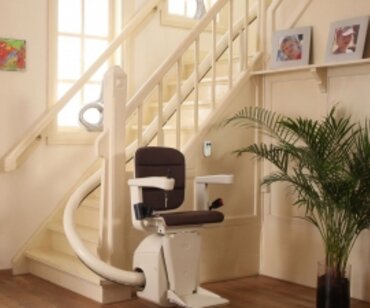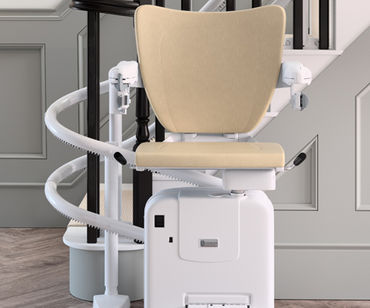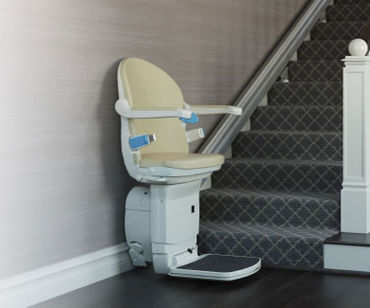Top tips for stairlift users to keep fit
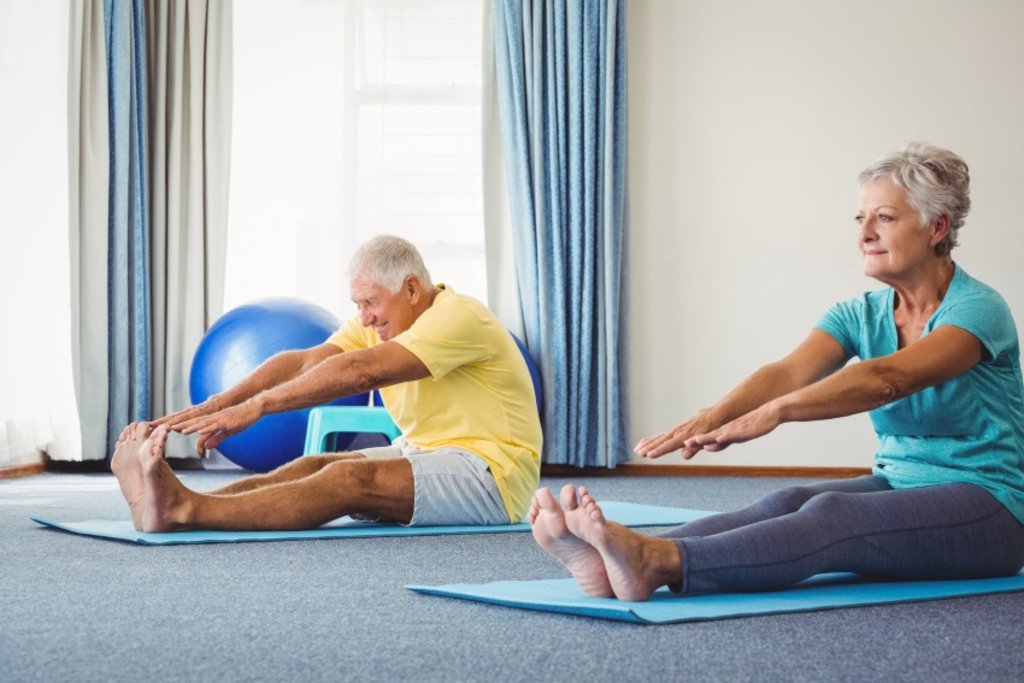
Those with mobility problems quite often find exercise more difficult than others, but it is still vitally important to keep fit and it shouldn’t mean that keeping active is ruled out.
No matter whether you need a stairlift at home or a walking stick to get around outside, everybody can exercise and adults should be active every day as it is vital to maintain good health and joint condition, reducing symptoms of ailments such as arthritis.
Here are some great exercises and sports older people who suffer from mobility problems can do throughout the year to stay fit and healthy.
Dancing
Dancing is a popular activity amongst the older generation, and with benefits including muscle strength, balance and the heart and lung health, it is great for a person’s wellbeing, too.
The recent Zumba craze wasn’t just among the younger generation - many older people enjoy the dance classes too.
An article on the Telegraph website reveals that more than one million cases of disease amongst the older generation could be prevented if they took up regular dance classes.
The study by Ukactive says the number of hip fractures would fall by around one third if everyone in the UK over the age of 61 would participate in 150 minutes a week of dance exercises like line dancing or Zumba.
Zumba mixes low-intensity and high-intensity moves in an interval-style, calorie-burning dance fitness class. It combines cardio, muscle conditioning, flexibility and balance.
Swimming and water aerobics
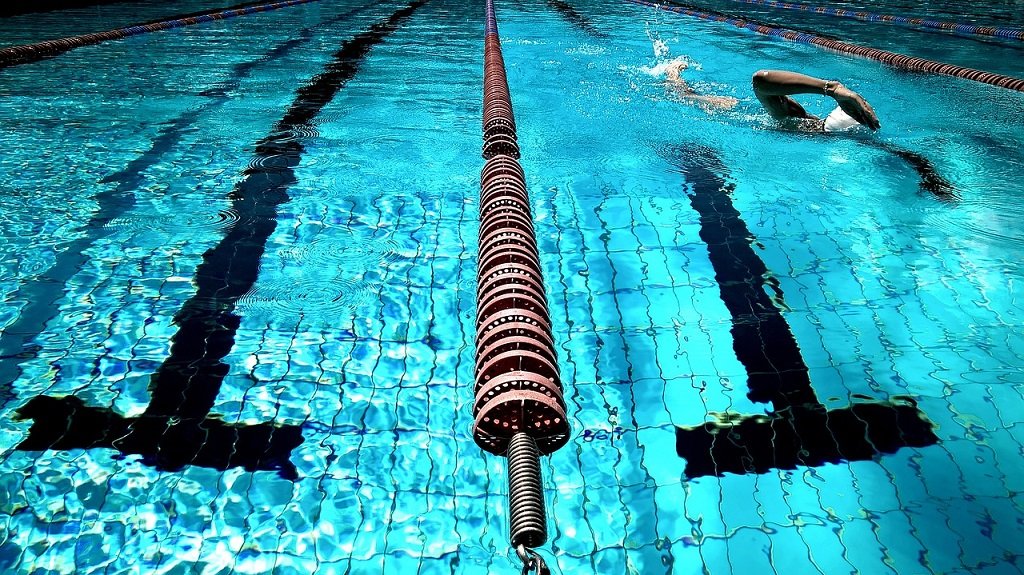
Swimming and aqua aerobics are great forms of exercise for older people as both increase muscular development and improve cardiovascular fitness. They also strengthen and tone joints, improve stamina, help with weight loss, aid joint flexibility, improve balance and lower stress and anxiety levels.
Most water aerobics classes are led by trained coaches and they will guide you through the certain exercises you should do in the water as well as the benefits of the different exercises.
Swimming and water aerobics isn’t just great for your health as it also gives you the opportunity to meet up with friends and meet new ones.
Aging Care says, “Research suggests that socialisation is one of the key motivators compelling elderly people to begin and maintain an exercise program.
“The opportunities for socialisation during a water workout are practically endless. Group exercise classes provide an ideal opportunity to talk, and even lap swimming can be made conversation-friendly.”
Older people should always consult with their doctor before diving into a water-based exercise as some activities that involve water going past the waist can be harmful to asthma sufferers and people with high blood pressure.
If you are looking for something slightly different than a normal water aerobics class, then one popular aerobic exercise that is gaining in popularity is Swimsanity, a high intensity aerobic and conditioning work out class except it takes out the forces on the body’s joints. This is great for older people looking to increase the strength of their muscles.
Tai Chi, Yoga, Pilates
Pilates
Pilates is a blend of stretching and other gymnastic exercises that are aimed at improving flexibility, abdominal and back muscles and balance.
Mature adults can not only improve their flexibility and agility, but can alleviate back pain and other chronic ailments.
After originally being used predominantly by dancers, Pilates is now offered as classes by gyms across the whole of the UK.
Yoga
This exercise combines a number of stretching and relaxation techniques, which have been formed over thousands of years.
Older people can benefit from a calmer mind, fitter body and feel more relaxed as a result of this exercise.
Jeannie from Yoga Jeannie, who has spent most of her life exploring bodywork disciplines, talks about her yoga classes, “Each class focuses on developing healthy body mechanics and alignment, awareness and flow of breath, movement and energy to help open, balance and strengthen the body and mind.”
Yoga can also help with blood pressure, decrease lower back pain and even cleanse your airways with its number of different breathing techniques.
Tai Chi
This Chinese ancient martial arts program can help older people improve their balance and help them avoid falls.
Many of the movements involved in Tai Chi are gentle and soothing and make muscles stronger, improving concentration and psychological well-being.
The philosophy of this ancient practice is to slow down, relax and coordinate the mind and body, whilst also improving posture.
An article on the Telegraph has previously revealed that studies have found heart health has improved in participants and blood pressure, vascular resistance and pulse pressure was superior compared to when they started.
Cycling
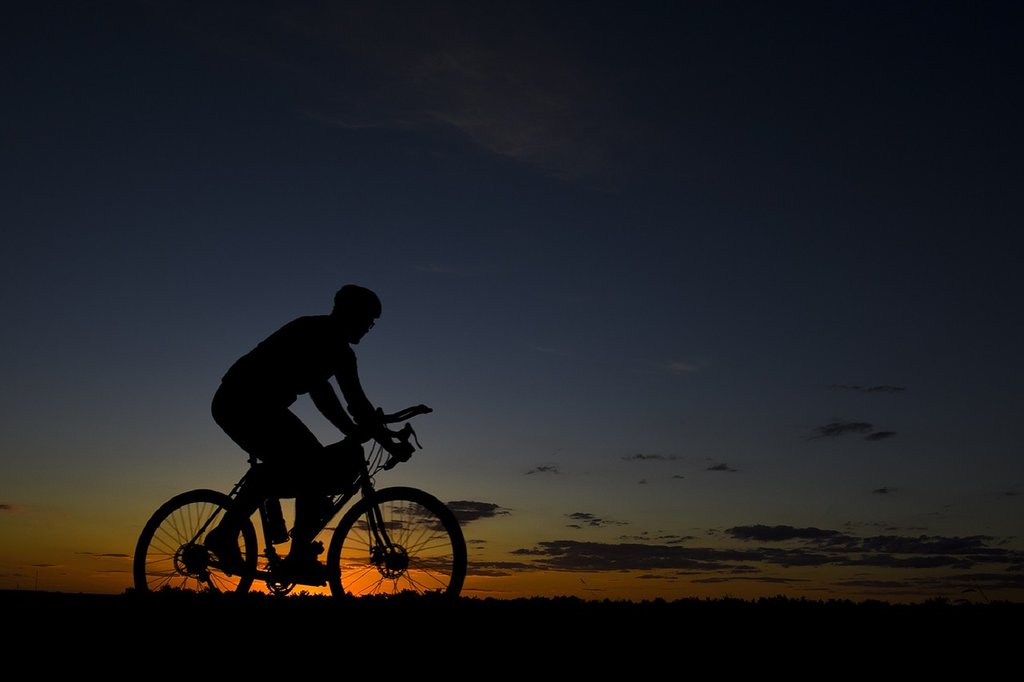
Cycling is enjoyed by people of all ages and it is another great form of exercise for those with mobility issues.
Regular cycling can help reduce the risk of illnesses like heart disease, type 2 diabetes and stroke as well as boosting your mood and keeping your weight in check.
The NHS recommend older people to do at least 150 minutes of moderate exercise such as cycling every week.
Before you head out on a bike ride there are a few things you should consider. If you have bought a second-hand bike, for example, get a bike shop to service it to ensure it is roadworthy. If you have a disability or suffer from mobility problems, then you may wish to consider purchasing a specialist bike from the likes of CTC and Wheels for All.
Gardening
Gardening has a number of health and therapeutic benefits for older people. Even if you have a physical disability that has prevented you from gardening in recent years, there are lots of options available as our guide on making your garden accessible shows.
Here are some of the major benefits of gardening:
• Helps mobility and flexibility
• Improves strength and endurance
• Reduces stress
• Improves wellbeing
• Is really fun
Although there are lots of pros to gardening for older people, there are some considerations you need to think about to make your garden more accessible such as raising flower beds, widening pathways and adding lots of seated areas.
Walking
The great thing about walking is that you can do it no matter what age and it is excellent exercise both physically and mentally.
Walking and Hiking share some advice on the types of walks older people should do, saying, “Much advice is simply good sense. Hills, especially rough trails, can become more of a problem for older people, so making sure that you’re walking is on flatter paths is quite self-evident. The same applies to distance; you might not be as comfortable covering as many miles as before.”
Whilst walking can be enjoyed alone, it is great fun in groups and fortunately there are lots located all over the country with many geared towards older people and others catering for a range of ages.
If you are considering going for a stroll it is important to plan the route and distance you are going to walk. You need to make sure you choose a route that you will enjoy rather than one that will absolutely drain you.
Make sure you are wearing appropriate footwear and clothing for the walk and don’t be afraid to take lots of breaks.
Walking for just 20-30 minutes a day, even if it’s just in your local area, can keep you healthy.

